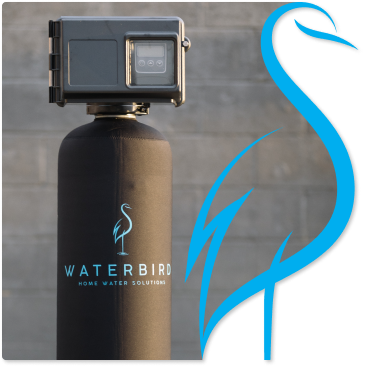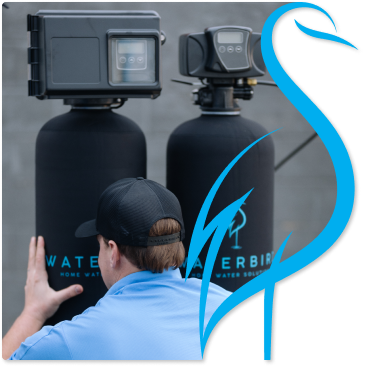When you need water softener repair services in Delaware, OH, you can rely on WaterBird Home Water Solutions. Our plumbers are highly knowledgeable and will respond quickly to ensure you get the professional assistance that you need. We offer water softener repair services for all different brands and system models.
Water Softener Repair in Delaware, OH

Delaware’s Best Water Softener Repair
If your home has hard water, a water softener system is an absolute must. The system ensures that your water is soft enough before it reaches all of your plumbing fixtures and appliances. This extends the longevity of your plumbing system and leads to softer and smoother skin.
- Brine tank
- Resin tank
- Resin beads
- Bypass valve
- Control valve
- Drain line
Over the 10 to 20-year lifespan of your water softener system, it isn’t uncommon to experience issues from time to time. When you do notice something out of the norm, it’s best to give us a call so that we can repair the problem swiftly. You never want to continue to run your system when you know it has a problem, as it’s likely just going to lead to more damage and a higher repair bill for you.
Sometimes, you may notice something obvious that’s off with your system, like a salt bridge when you open up the salt tank. Other times, it may take a while before you notice a buildup of limescale on your plumbing fixtures. A lot of the time, homeowners don’t realize they have a problem with their water softener system until they notice white spots on their dishes, dry and itchy skin, frizzy hair, and stiff laundry.
One common problem that many homeowners deal with concerning their water softener system is a sludge buildup inside the brine tank. In most cases, this sludge is going to be mushy salt and will block the brine tank from being able to regenerate the beads in the resin tank. This mushy salt can be the result of using a low-quality salt in your system or another issue. You can try cleaning it out and using a higher-quality salt to see if that solves your problem. If it doesn’t, it’s best to give us a call so that we can further evaluate the source of the problem and repair it swiftly.
Another issue you may have with your water softener system is that it isn’t regenerating appropriately. If the problem doesn’t lie with a salty mush in your brine tank, the issue may be with the control valve or the timer for the regeneration cycle. You can try to manually start a regeneration cycle to see if it works. If it does, you likely have a faulty timer that needs to be replaced.
Water Softener Repair Service Expert
WaterBird Home Water Solutions is a water softener repair service expert serving the Delaware community. We’re more than happy to offer our customers free water testing. We have over 40 years of experience and are proud to be a family-owned and run business.
Frequently Asked Questions

If you need water softener repair services in Delaware, call WaterBird Home Water Solutions today.
Explore all of our professional water quality services!

